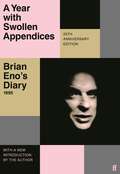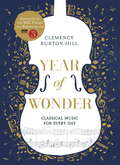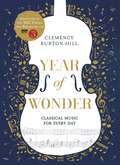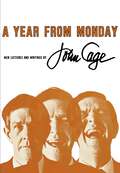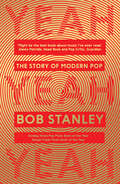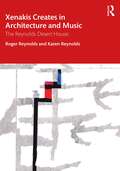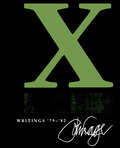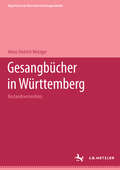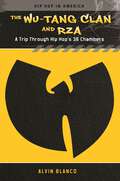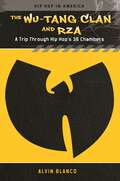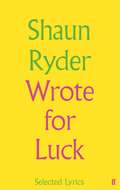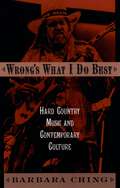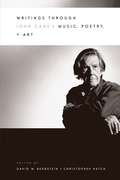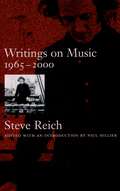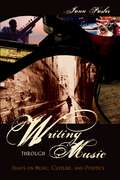- Table View
- List View
Yiruma SOLO: Easy
by YirumaThe full eBook version of Yiruma SOLO: Easy in fixed-layout format. Discover the enchanting world of Yiruma with the official easy piano sheet music from his best-selling recorded album, SOLO. Released in 2021 to celebrate the 20th anniversary of Yiruma's debut as a composer, SOLO features best-loved works including Kiss the Rain and chart-topping sensation River Flows in You. Yiruma SOLO: Easy presents the composer's own official authorised scores for each piece from SOLO in accessible, easy piano arrangements that are perfect for beginner pianists. Featuring all the tunes fans want to play these luxury editions include exclusive photography and an inspiring note from the composer himself. I have compiled a list of my pieces for solo piano that have existed for a long time. These works were the simplest way of capturing a specific moment and feeling when I wrote them. I would like to share these moments with you now and wish sincerely that my music be a hand to hold along the winding path of life Yiruma These deluxe books offer the best introduction to Yiruma's music that anyone could hope for. Andrew Eales, Pianodao.com
Yeehaw!: A Rootin’ Tootin’ Roundup of Country Positivity
by Summersdale PublishersCountry's all about attitude and heart, and this compilation contains all the life lessons you need to lead every day with positivity. Filled with quotes, sayings and cowboy slang, this little book will have you kicking up your heels and hollering "Yeehaw!"
A Year with Swollen Appendices: Brian Eno's Diary
by Brian EnoThe diary and essays of Brian Eno republished twenty-five years on with a new introduction by the artist in a beautiful hardback edition.'A cranium tour of one of the most creative minds of our age . . . [Eno] delivers razor-sharp commentary with devilish snarkiness and brutal honesty.' WiredAt the end of 1994, Brian Eno resolved to keep a diary. His plans to go to the cinema, theatre and galleries fell quickly to the wayside. What he did do - and write - however, was astonishing: ruminations on his collaborative work with David Bowie, U2, James and Jah Wobble, interspersed with correspondence and essays dating back to 1978. These 'appendices' covered topics from the generative and ambient music Eno pioneered to what he believed the role of an artist and their art to be, alongside adroit commentary on quotidian tribulations and happenings around the world.An intimate insight into one of the most influential creative artists of our time, A Year with Swollen Appendices is an essential classic.
The Year that Made the Musical: 1924 and the Glamour of Musical Theatre
by null William A. EverettWhether they appeared on Broadway or the Strand, the shows appearing in 1924 epitomized the glamor of popular musical theatre. What made this particular year so distinctive – so special – was the way it brought together the old and the new, the venerated and the innovative, and the traditional and the chic. William Everett, in his compelling new book, reveals this remarkable mid-Roaring Twenties stagecraft to have been truly transnational, with a stellar cast of producers, performers and creators boldly experimenting worldwide. Revues, musical comedies, zarzuelas and operettas formed part of a thriving theatrical ecosystem, with many works – and their leading artists – now unpredictably defying genres. The author demonstrates how fresh approaches became highly successful, with established leads like Marie Tempest and Fred Stone appearing in new productions even as youthful talents such as Florence Mills, Fred and Adele Astaire, Gertrude Lawrence and George Gershwin now started to make their mark.
YEAR OF WONDER: Classical Music To Enjoy Day By Day
by Clemency Burton-Hill*Exclusively for iBooks* Discover and Share the Year of Wonder Playlists on Apple Music.'Year of Wonder is an absolute treat - the most enlightening way to be guided through the year.' Eddie RedmayneClassical music for everyone - an inspirational piece of music for every day of the year, celebrating composers from the medieval era to the present day, written by award-winning violinist and BBC Radio 3 presenter Clemency Burton-Hill.Have you ever heard a piece of music so beautiful it stops you in your tracks? Or wanted to discover more about classical music but had no idea where to begin? Year of Wonder is a unique celebration of classical music by an author who wants to share its diverse wonders with others and to encourage a love for this genre in all readers, whether complete novices or lifetime enthusiasts. Clemency chooses one piece of music for each day of the year, with a short explanation about the composer to put it into context, and brings the music alive in a modern and playful way, while also extolling the positive mindfulness element of giving yourself some time every day to listen to something uplifting or beautiful. Thoughtfully curated and expertly researched, this is a book of classical music to keep you company: whoever you are, wherever you're from.'The only requirements for enjoying classical music are open ears and an open mind.' Clemency Burton-Hill
YEAR OF WONDER: Classical Music For Every Day
by Clemency Burton-HillAs featured in the Telegraph and on Radio 4's Today programme. 'A magnificent treasury . . . a fascinating tour de force.' Observer'Year of Wonder is an absolute treat - the most enlightening way to be guided through the year.' Eddie RedmayneClassical music for everyone - an inspirational piece of music for every day of the year, celebrating composers from the medieval era to the present day, written by award-winning violinist and BBC Radio 3 presenter Clemency Burton-Hill.Have you ever heard a piece of music so beautiful it stops you in your tracks? Or wanted to discover more about classical music but had no idea where to begin? Year of Wonder is a unique celebration of classical music by an author who wants to share its diverse wonders with others and to encourage a love for this genre in all readers, whether complete novices or lifetime enthusiasts. Clemency chooses one piece of music for each day of the year, with a short explanation about the composer to put it into context, and brings the music alive in a modern and playful way, while also extolling the positive mindfulness element of giving yourself some time every day to listen to something uplifting or beautiful. Thoughtfully curated and expertly researched, this is a book of classical music to keep you company: whoever you are, wherever you're from.'The only requirements for enjoying classical music are open ears and an open mind.' Clemency Burton-HillPlaylists are available on most streaming music platforms including Apple Music.
Yeah Yeah Yeah: The Story of Modern Pop
by Bob StanleyModern pop began in 1952 when the first British chart was published and the first 7" singles were released. It ended (perhaps) in 1995 when Robson and Jerome reached the top of the charts with the first number one not to be available on vinyl since 1953. The internet age ushered in the death rites of over 40 years of pop.A Complete History Pop describes the journey that leads from 'Rock Around the Clock' to 'Crazy in Love'. Raw, thrilling, surprising and sometimes downright dangerous, the Pop moment almost always clocks in under 3:30 and is initially, immediately recognised by a teenage listener.Billy Fury. Chuck Berry. Sonny and Cher. The Troggs. Glen Campbell. Bee Gees. Roxy Music. Chic. Slade. Sex Pistols. Adam and the Ants. Pet Shop Boys. New Order. Madonna. Bob Stanley's A Complete History of Pop documents the rich soundtrack of the last six decades as it has been heard on radios and jukeboxes across the land.There have been many books on pop but very few, if any, have attempted to bring the whole story to life from rock n roll to house and techno in all its various sub-permutations. Audacious and addictive, A Complete History of Pop is a one-stop pop shop for the music lover everywhere.
Xylophone (UEB uncontracted)
by RnibThis is an image of a xylophone: a musical instrument made of wooden blocks.There is a locator dot shown which will be at the top left of the page when the image is the correct way up.The xylophone is a chromatic instrument; it can play all twelve notes in an octave. The sound is made by hitting the wooden blocks with a pair of round-headed hammers.The blocks are arranged like the keys on a piano, with the black notes on a higher level, above the white notes. The blocks are supported by a metal frame with horizontal rails. The larger blocks, which make the lower notes are to the left of the page and the smaller blocks, which make the higher notes are on the right of the page.The hammers can be found going horizontally across at the bottom of the page with their heads to the left.
Xylophone (UEB contracted)
by RnibThis is an image of a xylophone: a musical instrument made of wooden blocks.There is a locator dot shown which will be at the top left of the page when the image is the correct way up.The xylophone is a chromatic instrument; it can play all twelve notes in an octave. The sound is made by hitting the wooden blocks with a pair of round-headed hammers.The blocks are arranged like the keys on a piano, with the black notes on a higher level, above the white notes. The blocks are supported by a metal frame with horizontal rails. The larger blocks, which make the lower notes are to the left of the page and the smaller blocks, which make the higher notes are on the right of the page.The hammers can be found going horizontally across at the bottom of the page with their heads to the left.
Xylophone (large print)
by RnibThis is an image of a xylophone: a musical instrument made of wooden blocks.There is a locator dot shown which will be at the top left of the page when the image is the correct way up.The xylophone is a chromatic instrument; it can play all twelve notes in an octave. The sound is made by hitting the wooden blocks with a pair of round-headed hammers.The blocks are arranged like the keys on a piano, with the black notes on a higher level, above the white notes. The blocks are supported by a metal frame with horizontal rails. The larger blocks, which make the lower notes are to the left of the page and the smaller blocks, which make the higher notes are on the right of the page.The hammers can be found going horizontally across at the bottom of the page with their heads to the left.
Xenakis Creates in Architecture and Music: The Reynolds Desert House
by Roger Reynolds Karen ReynoldsXenakis Creates in Architecture and Music describes the collaborative interaction of internationally acclaimed composer Roger Reynolds, musician Karen Reynolds, and musically inspired composer, engineer, and architect Iannis Xenakis (1922-2001) to create a house design, The Reynolds Desert House. The process combined aesthetics and intuition with mathematical systems, showcasing how art and science are balanced—by way of music and architecture—to address the essential technical aspects of music along with the role of emotion and energy. The book analyzes three representative chamber works and presents a trove of primary sources: letters, diaries, notes, photographs, sketches, and person-to-person conversations. What emerges are patterns of direct parallels between how Xenakis characterized the process of musical creation and his design of The Reynolds Desert House. Xenakis Creates in Architecture and Music is a testament to the singularly innovative and creative mind of Iannis Xenakis. Supplementary materials—including color reproductions of black and white images in the book—can be found at: www.rogerreynolds.com/xenakisreynoldsroutledge.html
Xenakis Creates in Architecture and Music: The Reynolds Desert House
by Roger Reynolds Karen ReynoldsXenakis Creates in Architecture and Music describes the collaborative interaction of internationally acclaimed composer Roger Reynolds, musician Karen Reynolds, and musically inspired composer, engineer, and architect Iannis Xenakis (1922-2001) to create a house design, The Reynolds Desert House. The process combined aesthetics and intuition with mathematical systems, showcasing how art and science are balanced—by way of music and architecture—to address the essential technical aspects of music along with the role of emotion and energy. The book analyzes three representative chamber works and presents a trove of primary sources: letters, diaries, notes, photographs, sketches, and person-to-person conversations. What emerges are patterns of direct parallels between how Xenakis characterized the process of musical creation and his design of The Reynolds Desert House. Xenakis Creates in Architecture and Music is a testament to the singularly innovative and creative mind of Iannis Xenakis. Supplementary materials—including color reproductions of black and white images in the book—can be found at: www.rogerreynolds.com/xenakisreynoldsroutledge.html
Württembergischer Gesangbuchkatalog: Bestandsverzeichnis
Ein Verzeichnis von über 5.000 aller in Württemberg heute noch nachweisbaren Gesangbücher, deren Titel diplomatisch wiedergegeben und mit bibliographischen Daten versehen wurden.
The Wu-Tang Clan and RZA: A Trip through Hip Hop's 36 Chambers (Hip Hop in America)
by Alvin BlancoThis insightful biography looks at the turbulent lives, groundbreaking music and lyrics, and powerful brand of hip hop's infamous Wu-Tang Clan.The Wu-Tang Clan and RZA: A Trip through Hip Hop's 36 Chambers chronicles the rise of the Wu-Tang Clan from an underground supergroup to a globally recognized musical conglomerate. Enhanced by the author's one-on-one interviews with group members, the book covers the entire Wu-Tang Clan catalog of studio albums, as well as albums that were produced or heavily influenced by producer/rapper RZA. Wu-Tang Clan's albums are analyzed and discussed in terms of their artistry as well as in terms of their critical, cultural, and commercial impact. By delving into the motivation behind the creation of pivotal songs and albums and mining their dense metaphor and wordplay, the book provides an understanding of what made a team of nine friends and relatives from Staten Island with a love of Kung Fu movies into not just a music group, but a powerful cultural movement.
The Wu-Tang Clan and RZA: A Trip through Hip Hop's 36 Chambers (Hip Hop in America)
by Alvin BlancoThis insightful biography looks at the turbulent lives, groundbreaking music and lyrics, and powerful brand of hip hop's infamous Wu-Tang Clan.The Wu-Tang Clan and RZA: A Trip through Hip Hop's 36 Chambers chronicles the rise of the Wu-Tang Clan from an underground supergroup to a globally recognized musical conglomerate. Enhanced by the author's one-on-one interviews with group members, the book covers the entire Wu-Tang Clan catalog of studio albums, as well as albums that were produced or heavily influenced by producer/rapper RZA. Wu-Tang Clan's albums are analyzed and discussed in terms of their artistry as well as in terms of their critical, cultural, and commercial impact. By delving into the motivation behind the creation of pivotal songs and albums and mining their dense metaphor and wordplay, the book provides an understanding of what made a team of nine friends and relatives from Staten Island with a love of Kung Fu movies into not just a music group, but a powerful cultural movement.
Wrote For Luck: Selected Lyrics
by Shaun RyderIn the mid-1980s the Happy Mondays emerged as the prime mischief makers on the Madchester scene. Chief protagonist was Shaun Ryder, a man whose lyrical street swagger in songs like Kinky Afro, 24 Hour Party People and Performance, would come to define a generation. Here collected and edited for the first time, in trade and special editions, are his unforgettable lyrics.
Wrong's What I Do Best: Hard Country Music and Contemporary Culture
by Barbara ChingThis is the first study of "hard" country music as well as the first comprehensive application of contemporary cultural theory to country music. Barbara Ching begins by defining the features that make certain country songs and artists "hard." She compares hard country music to "high" American culture, arguing that hard country deliberately focuses on its low position in the American cultural hierarchy, comically singing of failures to live up to American standards of affluence, while mainstream country music focuses on nostalgia, romance, and patriotism of regular folk. With chapters on Hank Williams Sr. and Jr., Merle Haggard, George Jones, David Allan Coe, Buck Owens, Dwight Yoakam, and the Outlaw Movement, this book is written in a jargon-free, engaging style that will interest both academic as well as general readers.
Writings through John Cage's Music, Poetry, and Art
by David W. Bernstein Christopher HatchThis volume looks at the creative work of the great avant-gardist John Cage from an exciting interdisciplinary perspective, exploring his activities as a composer, performer, thinker, and artist. The essays in this collection grew out of a pivotal gathering during which a spectrum of participants including composers, music scholars, and visual artists, literary critics, poets, and filmmakers convened to examine Cage's extraordinary artistic legacy. Beginning with David Bernstein's introductory essay on the reception of Cage's music, the volume addresses topics ranging from Cage's reluctance to discuss his homosexuality, to his work as a performer and musician, and his forward-looking, provocative experimentation with electronic and other media. Several of the essays draw upon previously unseen sketches and other source materials. Also included are transcripts of lively panel discussions among some of Cage's former colleagues. Taken together, this collection is a much-needed contribution to the study of one of the most significant American artists of the twentieth century.
Writings through John Cage's Music, Poetry, and Art
by David W. Bernstein Christopher HatchThis volume looks at the creative work of the great avant-gardist John Cage from an exciting interdisciplinary perspective, exploring his activities as a composer, performer, thinker, and artist. The essays in this collection grew out of a pivotal gathering during which a spectrum of participants including composers, music scholars, and visual artists, literary critics, poets, and filmmakers convened to examine Cage's extraordinary artistic legacy. Beginning with David Bernstein's introductory essay on the reception of Cage's music, the volume addresses topics ranging from Cage's reluctance to discuss his homosexuality, to his work as a performer and musician, and his forward-looking, provocative experimentation with electronic and other media. Several of the essays draw upon previously unseen sketches and other source materials. Also included are transcripts of lively panel discussions among some of Cage's former colleagues. Taken together, this collection is a much-needed contribution to the study of one of the most significant American artists of the twentieth century.
Writings through John Cage's Music, Poetry, and Art (Phoenix Fiction Ser.)
by David W. Bernstein Christopher HatchThis volume looks at the creative work of the great avant-gardist John Cage from an exciting interdisciplinary perspective, exploring his activities as a composer, performer, thinker, and artist. The essays in this collection grew out of a pivotal gathering during which a spectrum of participants including composers, music scholars, and visual artists, literary critics, poets, and filmmakers convened to examine Cage's extraordinary artistic legacy. Beginning with David Bernstein's introductory essay on the reception of Cage's music, the volume addresses topics ranging from Cage's reluctance to discuss his homosexuality, to his work as a performer and musician, and his forward-looking, provocative experimentation with electronic and other media. Several of the essays draw upon previously unseen sketches and other source materials. Also included are transcripts of lively panel discussions among some of Cage's former colleagues. Taken together, this collection is a much-needed contribution to the study of one of the most significant American artists of the twentieth century.
Writings on Music, 1965-2000
by Steve ReichIn the mid-1960s, Steve Reich radically renewed the musical landscape with a back-to-basics sound that came to be called Minimalism. These early works, characterized by a relentless pulse and static harmony, focused single-mindedly on the process of gradual rhythmic change. Throughout his career, Reich has continued to reinvigorate the music world, drawing from a wide array of classical, popular, sacred, and non-western idioms. His works reflect the steady evolution of an original musical mind. Writings on Music documents the creative journey of this thoughtful, groundbreaking composer. These 64 short pieces include Reich's 1968 essay "Music as a Gradual Process," widely considered one of the most influential pieces of music theory in the second half of the 20th century. Subsequent essays, articles, and interviews treat Reich's early work with tape and phase shifting, showing its development into more recent work with speech melody and instrumental music. Other essays recount his exposure to non-western music -- African drumming, Balinese gamelan, Hebrew cantillation -- and the influence of these musics as structures and not as sounds. The writings include Reich's reactions to and appreciations of the works of his contemporaries (John Cage, Luciano Berio, Morton Feldman, Gyorgy Ligeti) and older influences (Kurt Weill, Schoenberg). Each major work of the composer's career is also explored through notes written for performances and recordings. Paul Hillier, himself a respected figure in the early music and new music worlds, has revisited these texts, working with the author to clarify their central narrative: the aesthetic and intellectual development of an influential composer. For long-time listeners and young musicians recently introduced to his work, this book provides an opportunity to get to know Reich's music in greater depth and perspective.
Writings on Music, 1965-2000
by Steve ReichIn the mid-1960s, Steve Reich radically renewed the musical landscape with a back-to-basics sound that came to be called Minimalism. These early works, characterized by a relentless pulse and static harmony, focused single-mindedly on the process of gradual rhythmic change. Throughout his career, Reich has continued to reinvigorate the music world, drawing from a wide array of classical, popular, sacred, and non-western idioms. His works reflect the steady evolution of an original musical mind. Writings on Music documents the creative journey of this thoughtful, groundbreaking composer. These 64 short pieces include Reich's 1968 essay "Music as a Gradual Process," widely considered one of the most influential pieces of music theory in the second half of the 20th century. Subsequent essays, articles, and interviews treat Reich's early work with tape and phase shifting, showing its development into more recent work with speech melody and instrumental music. Other essays recount his exposure to non-western music -- African drumming, Balinese gamelan, Hebrew cantillation -- and the influence of these musics as structures and not as sounds. The writings include Reich's reactions to and appreciations of the works of his contemporaries (John Cage, Luciano Berio, Morton Feldman, Gyorgy Ligeti) and older influences (Kurt Weill, Schoenberg). Each major work of the composer's career is also explored through notes written for performances and recordings. Paul Hillier, himself a respected figure in the early music and new music worlds, has revisited these texts, working with the author to clarify their central narrative: the aesthetic and intellectual development of an influential composer. For long-time listeners and young musicians recently introduced to his work, this book provides an opportunity to get to know Reich's music in greater depth and perspective.
Writing through Music: Essays on Music, Culture, and Politics
by Jann PaslerDrawing on a passion for music, a remarkably diverse interdisciplinary toolbox, and a gift for accessible language that speaks equally to scholars and the general public, Jann Pasler invites us to read as she writes "through" music, unveiling the forces that affect our sonic encounters. In an extraordinary collection of historical and critical essays, some appearing for the first time in English, Pasler deconstructs the social, moral, and political preoccupations lurking behind aesthetic taste. Arguing that learning from musical experience is vital to our understanding of past, present, and future, Pasler's work trenchantly reasserts the role of music as a crucial contributor to important public debates about who we can be as individuals, communities, and nations. The author's wide-ranging and perceptive approaches to musical biography and history challenge us to rethink our assumptions about important cultural and philosophical issues including national identity and postmodern musical hybridity, material culture, the economics of power, and the relationship between classical and popular music. Her work uncovers the self-fashioning of modernists such as Vincent d'Indy, Augusta Holmès, Jean Cocteau, and John Cage, and addresses categories such as race, gender, and class in the early 20th century in ways that resonate with experiences today. She also explores how music uses time and constructs narrative. Pasler's innovative and influential methodological approaches, such as her notion of "question-spaces," open up the complex cultural and political networks in which music participates. This provides us with the reasons and tools to engage with music in fresh and exciting ways. In these thoughtful essays, music--whether beautiful or cacophonous, reassuring or seemingly incomprehensible--comes alive as a bearer of ideas and practices that offers deep insights into how we negotiate the world. Jann Pasler's Writing through Music brilliantly demonstrates how music can be a critical lens to focus the contemporary critical, cultural, historical, and social issues of our time.


